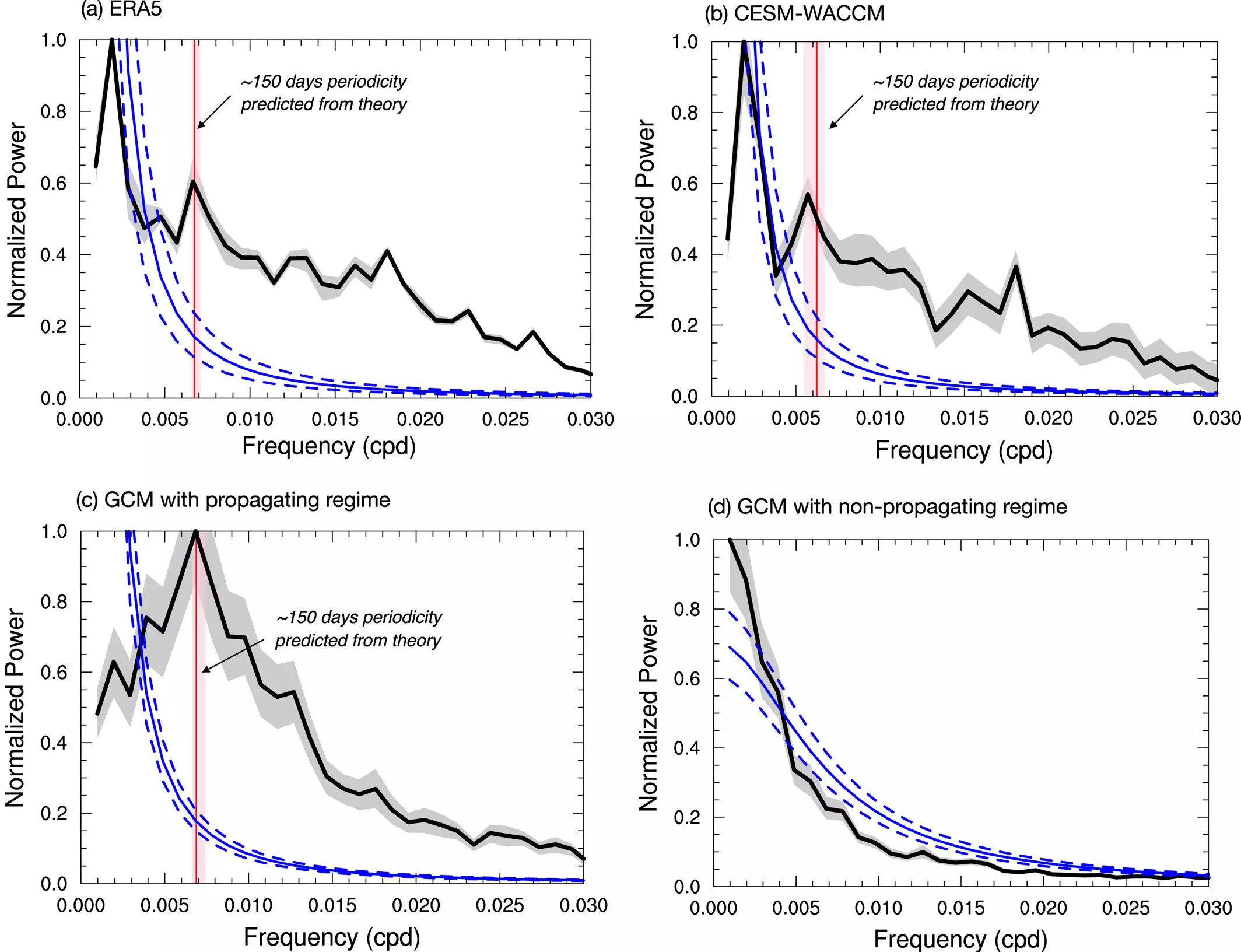Researchers at Rice University have discovered a natural cycle that repeats every 150 days in the north-south oscillation of atmospheric pressure patterns that drive the movement of the Southern Hemisphere’s prevailing westerly winds and the Antarctic jet stream. The cycle, known as an “internally generated periodicity,” was found to influence the variability of the hemisphere-scale precipitation and ocean surface wind stress, which suggests that it could have a broader impact on the weather and climate of the Southern Hemisphere and its ocean and cryosphere.
Background
The Southern Annular Mode (SAM), also known as the Antarctic oscillation, is an important climate driver for Australia, New Zealand, and Antarctica and has been well-studied for decades. The SAM affects many things in the Antarctic such as the ice, the ocean, the ozone layer, and almost everything. The oscillations, which can be seen in the north-south movements of the jet stream winds, happen randomly with timescales of 10-20 days. The discovery of the SAM’s 150-day periodicity came from rethinking the conventional mathematical and statistical approaches to understanding atmospheric circulation. The 150-day periodicity occurs because the SAM’s leading patterns of north-south movements are not independent. Rather, they interact with and are acted upon by other leading wind patterns.
Impact on Climate Modeling
Co-author Sandro Lubis said the paper’s biggest impact would likely be in the arena of climate modeling. Significantly, they found that many state-of-the-art climate models cannot reproduce this periodicity, which helps explain some of the previously reported shortcomings of these models in simulating the SAM variability. Based on those findings, they were able to propose new metrics and ideas for evaluating how well climate models simulate the SAM and for understanding their shortcomings and potentially improving them. The next step in the research is investigating why some state-of-the-art climate models fail to capture those interactions and the 150-day periodicity of the SAM.
The SAM is a statistical index of balanced air pressure anomalies of one sign near the 60th parallel and the opposite sign near the 30th parallel. The SAM oscillates in a seesaw pattern, rising and falling on opposing boundaries as the westerlies move north and south. When the SAM index is positive, the jet stream is enhanced and cold air stays bottled up around the pole. When the index is negative, atmospheric lows and rain and storms are more frequent in the mid-latitudes.
The discovery of the internally generated periodicity in the SAM by researchers at Rice University has shed new light on the Southern Hemisphere’s atmospheric pressure patterns. The periodicity was found to influence the variability of the hemisphere-scale precipitation and ocean surface wind stress, which suggests that it could have a broader impact on the weather and climate of the Southern Hemisphere and its ocean and cryosphere. The study’s biggest impact will likely be in the arena of climate modeling as the research has helped explain some of the previously reported shortcomings of these models in simulating the SAM variability.



Leave a Reply